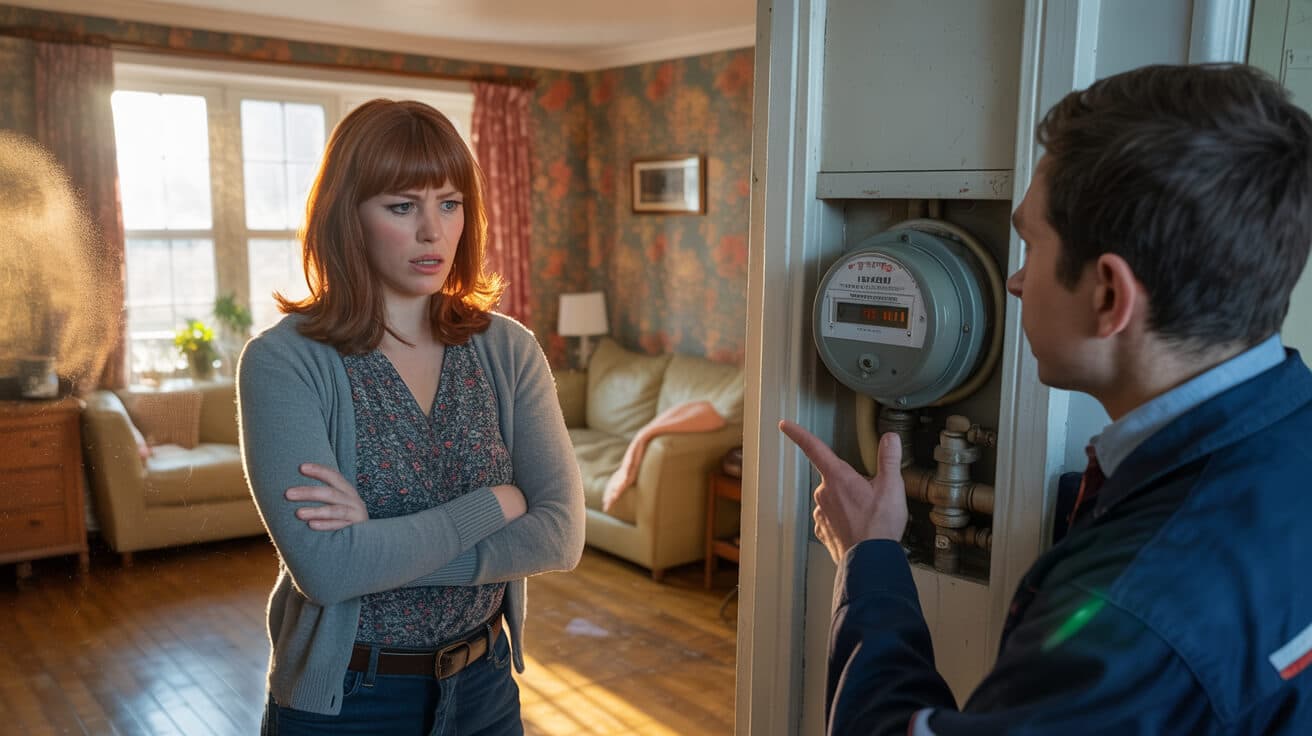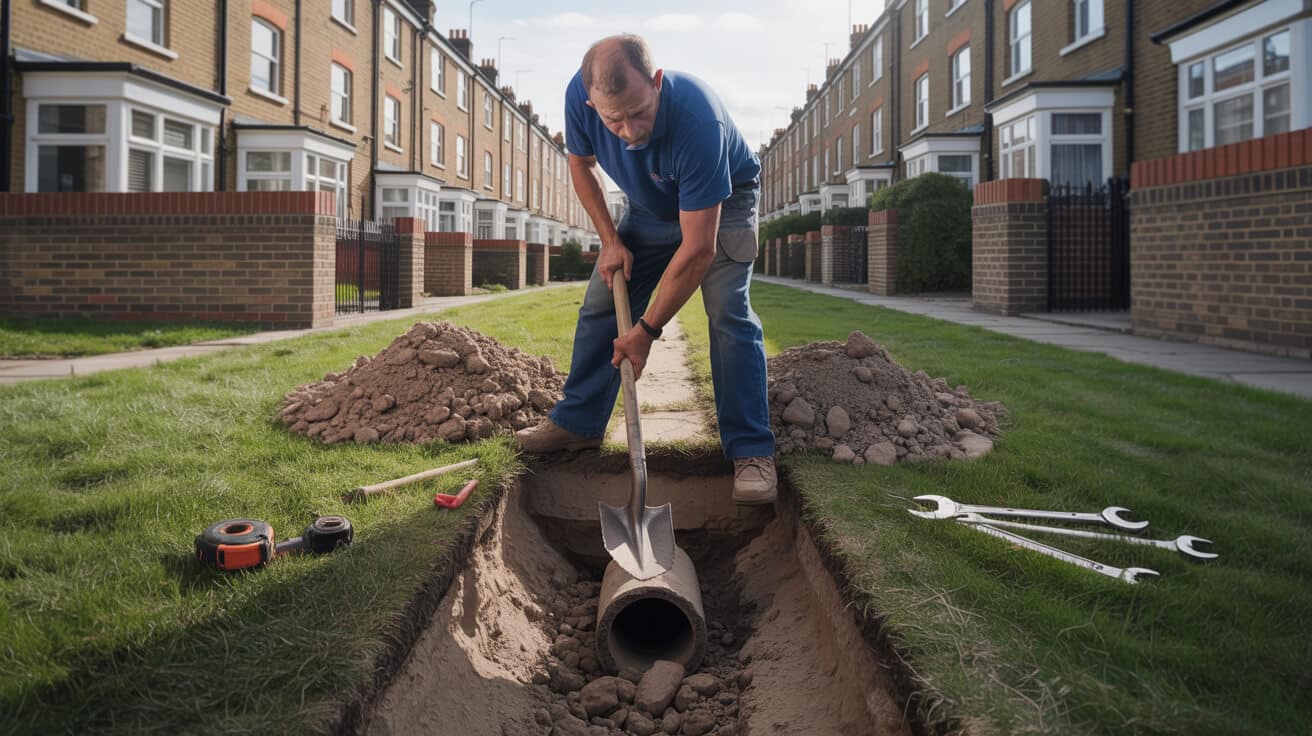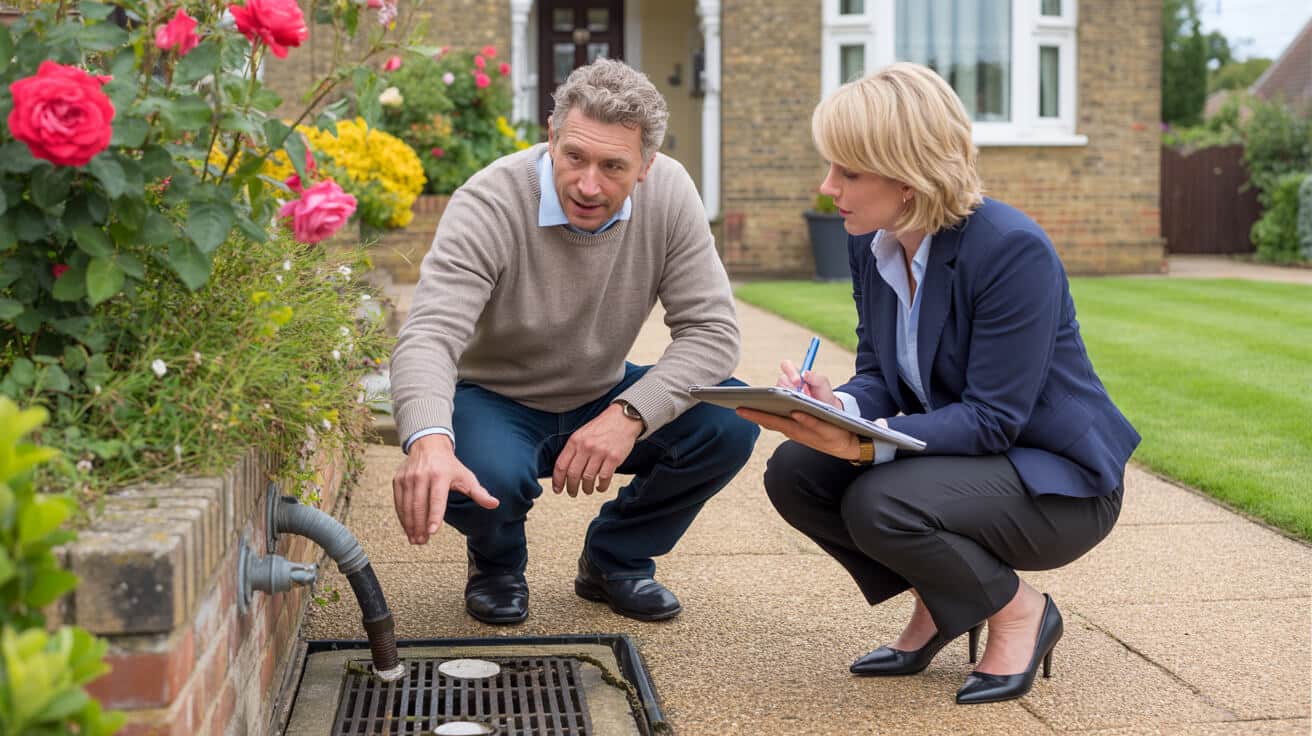 Autumn Plumbing Checklist Gutter Cleaning, Drainage & Taps
Autumn Plumbing Checklist Gutter Cleaning, Drainage & Taps
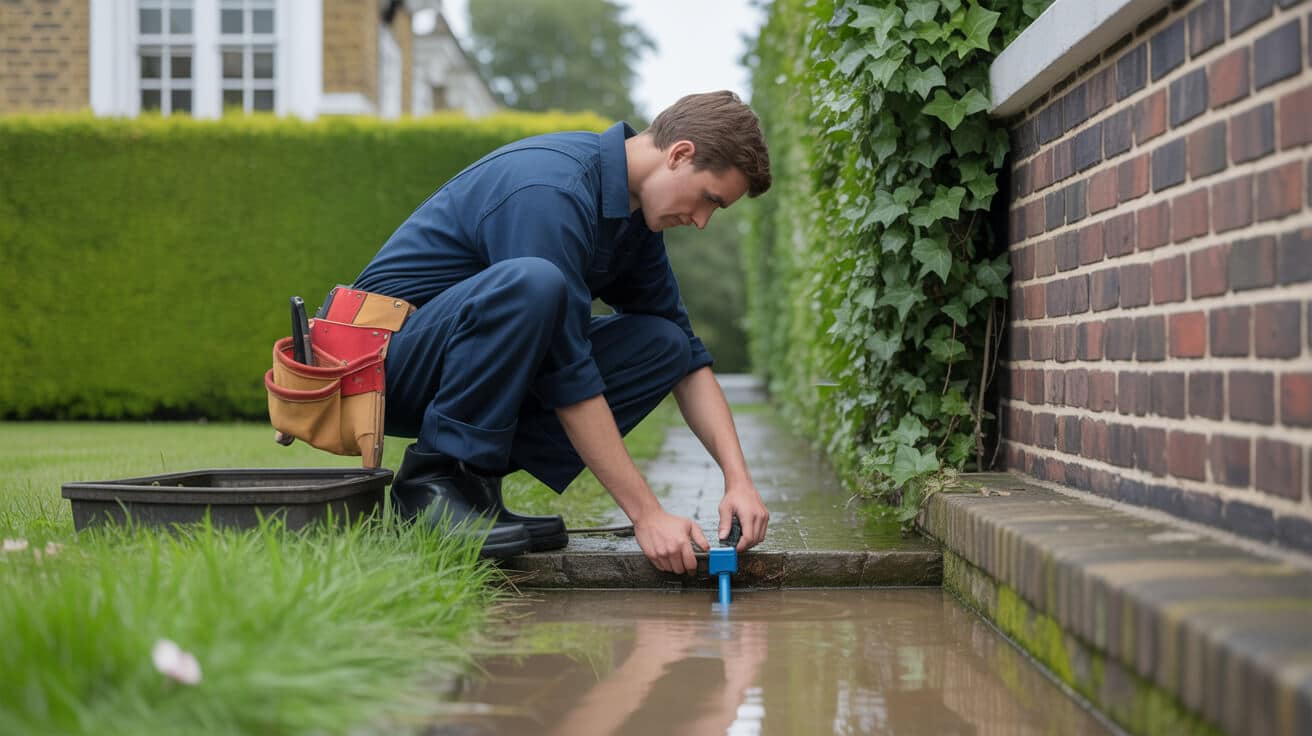
Why an Autumn Plumbing Checklist Could Save You More Than You Expect
Sudden plumbing disasters rarely arrive out of nowhere; more often, they’re the visible result of months of invisible risk—tiny lapses taken for granted while the weather is mild. As autumn arrives, property professionals know: what you do now determines everything from repair costs to insurance coverage for the rest of the year. The “hidden” nature of autumn plumbing threats means a small routine can have massive leverage—especially if you’re responsible for more than just your own four walls.
The five minutes you spend on a gutter today could save you thousands in emergency repairs tomorrow.
That’s the core of why an autumn plumbing checklist isn’t just busywork—it’s an insurance policy, compliance shield, and reputation asset rolled into one. Every step is distilled from real-world callouts, insurance data, and WRAS/WaterSafe code: the kind of things property managers, landlords, and agents get judged on when things go wrong. If you want warm, complaint-free winters and protection against the “blame game” when the claims assessor shows up, this is your playbook—tailored for homeowners, portfolio landlords, letting and managing agents, and commercial operators.
A smart autumn checklist does more than prevent leaks or keep water flowing. It documents diligence if insurers, block managers, or tenants ever question your standards. And for anyone who thinks “it won’t be me,” ask a landlord whose pipework burst last January why their claim was denied—or at what point they would have paid triple for a proper inspection before the cold snap.
How Can Overlooked Gutters Cause the Biggest Headaches?
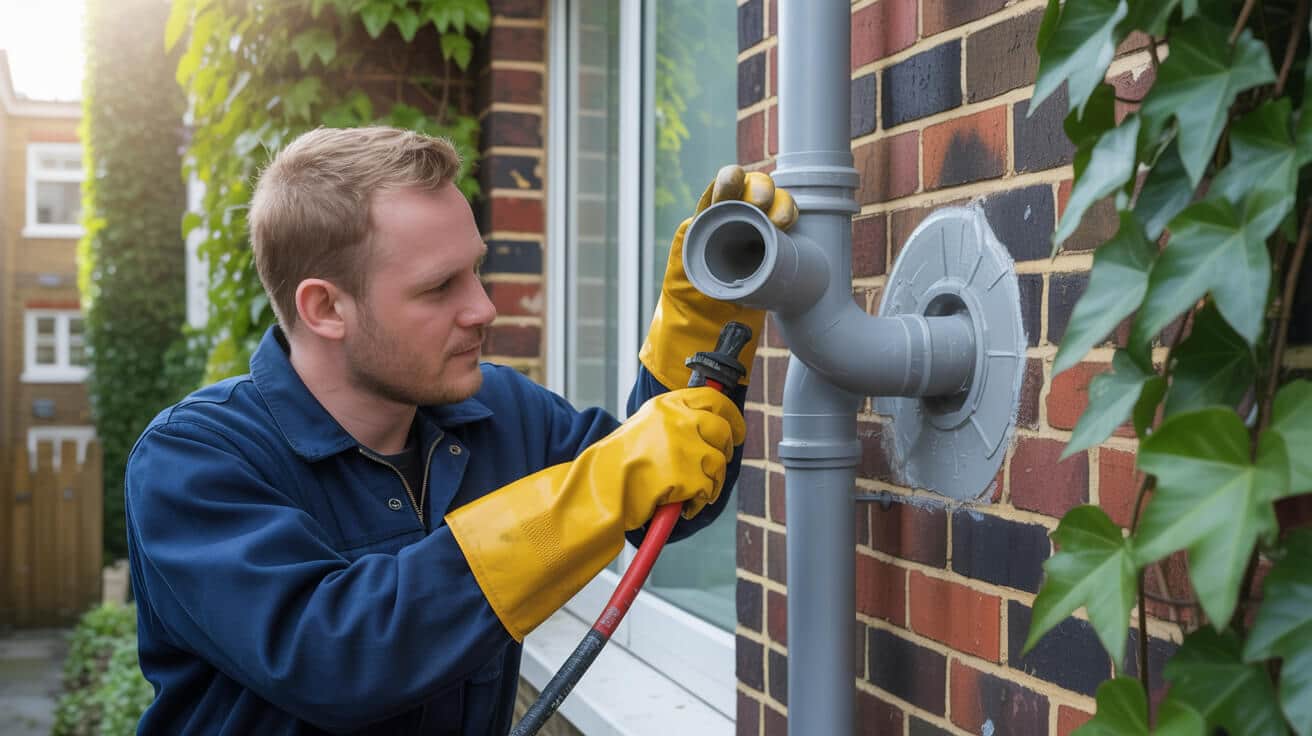
Gutters stand between your property and a chain reaction of damp, decay, and denied claims. For something so routinely forgotten, they’re behind more winter insurance issues than most realise. The leaves, moss, and debris autumn brings build silently—waiting to unleash a slow-burn problem when the heavy rains hit or temperatures drop suddenly. Loss adjusters and surveyors agree: “we missed a gutter clear” is the most expensive line owners utter all year (Aviva 2024).
Neglected gutters aren’t just an eyesore—they’re often the silent source of your property’s most expensive repairs.
The Pro Method: Keeping Gutters Flowing
- Hands-On Clearing: Every professional starts with gloves, bucket, and ladder. Remove leaves, moss, and silt by hand (or gutter scoop), checking joints and bends—always the trickiest spots.
- Test the Flow: Hose down the full run; water should travel cleanly from end to downpipe, with zero pooling. Any stutter means a hidden snag—often the start of internal wall damp.
- Visual Proof: Take before/after photos as you go. Modern warranty and insurance checks increasingly want “evidence of care” before covering a claim.
A single overlooked gutter session can void whole sections of your buildings insurance (SEHBAC). Letting agents and commercial managers should maintain a digital log—even just phone snaps—which acts as both client reassurance and a dispute philtre.
Gutter Neglect: The Silent Drain on Your Reputation
- Chronic internal damp almost always traces back to missed gutter clear-outs.
- Overflowing gutters direct rainwater to footings, risking foundation movement and costly structural repairs.
- Every missed clear increases complaint, claim, and compliance risk—painful to explain later.
Autumn gutter checks cost so little, but the “inheritance” of risk for those who skip is both financial and reputational. A simple log and a half hour on the ladder is all it often takes to avoid insurance wrangling and angry tenant calls.
Are Downpipes and External Drains a Hidden Flooding Hazard?

A clean gutter means nothing if what lies below—downpipes, outdoor grates and drains—isn’t also clear. Blocked downpipes cause runoff to course unpredictably down walls, ice over patios, or even seep into basements. Many “freak” winter flooding events are anything but: they result from autumn neglect where leaves, silt, or moss restrict water movement at ground level. Properties with untested drains are flagged by both insurers and councils as higher risk (Environment Agency).
A mysteriously damp patio or slow-clearing drain is your property begging for attention—before winter doubles the problem.
Downpipe and Drain Defence: Autumn Routine
- Inspect from Ground to Top: Begin with the downpipe’s base and check up to the gutter, feeling for blockages where joints meet the wall.
- Lift and Clear Drains: Remove gully grates, then—wear gloves—extract all trapped leaves, silt, or debris by hand.
- Water Testing: Pour water from a bucket and watch: if it drains readily, you’re clear. Any delay signals a starting blockage—perfect breeding ground for frost damage later.
- Keep Evidence: Like gutters, photograph or video your process. Leasehold managers and block controllers may require this proof for audit or compliance.
Professionals know: blocked drains are the top denial reason for winter insurance claims and the trigger for many negative property condition surveys at sale time.
External Drainage: Why It’s a Make-or-Break Issue
- Most ground flooding, wall staining, and even insurance claim denials begin outside, not with internal plumbing.
- Loss adjusters more frequently request logs or proof a property isn’t being “left to risk by owners.”
- For blocks or multi-let units, maintaining external drains is often a lease or compliance requirement; missing it can expose the whole portfolio.
If you do one thing each autumn beyond clearing gutters, make it the fifteen-minute patrol around downpipes, gullies, and drains. You’ll rarely get thanked for the leaks you prevent—but the callouts and claim paperwork you avoid speak for themselves.
Are Outdoor Taps and Exposed Pipes a Winter Disaster Waiting to Happen?

Outdoor taps, side-yard pipes, and exposed plumbing seem harmless—until the first deep frost causes a hidden burst. It’s routine in winter for urgent callouts to centre on “burst pipe by outside tap” and surveyors to flag the lack of insulation as both a compliance and insurance risk. For every client who “never saw it coming,” there’s usually an outdoor tap left pressurised, unlagged, or simply forgotten until water leaks into the kitchen (mrrooter.com).
The tap that’s silent in October may be the one flooding your kitchen in December.
Stepwise Autumn Protection for Outdoor Plumbing
- Hose Off: Remove and fully drain hoses from all outside taps and bibs. Hanging hoses trap water, guaranteeing a freeze at the valve.
- Valves Isolated—Not Just ‘Turned Off’: Use interior shut-off valves if you have them. If not, ask for one to be added before the next cold snap.
- Spec Insulation: WRAS-approved pipe lagging is mandatory for all exposed pipework. Avoid cheap “DIY” foam—insurers are increasingly asking for documentation on insulation if a freeze occurs.
- Check and Correct: Any visible green corrosion or dampness around joints must be professionally sealed or replaced before frost; this is a common trigger for major bursts.
Landlords, letting agents, and facilities managers are now required to log outdoor plumbing protection in property risk registers. Winter damage claims for “unprotected” outdoor taps are routinely denied because prevention is considered “standard care” (energyhelpline.com).
Winter Proofing: Expectation, Not Luxury
- Squealing taps or pipes as you shut down for winter? That’s trapped water and imminent disaster.
- Tape-wrapped or worn insulation? Time for full lagging, not patch jobs—especially for holiday homes or infrequent-use properties.
- If you look after blocks, remember: a single tenanted flat with a burst pipe can disrupt the entire building’s supply and reputation.
A little documentation, a few labelled valves, and proper insulation will earn praise on your maintenance logs and avoid panicked Christmas Eve calls.
Are You Overlooking Your Indoor Plumbing’s Weak Links This Season?
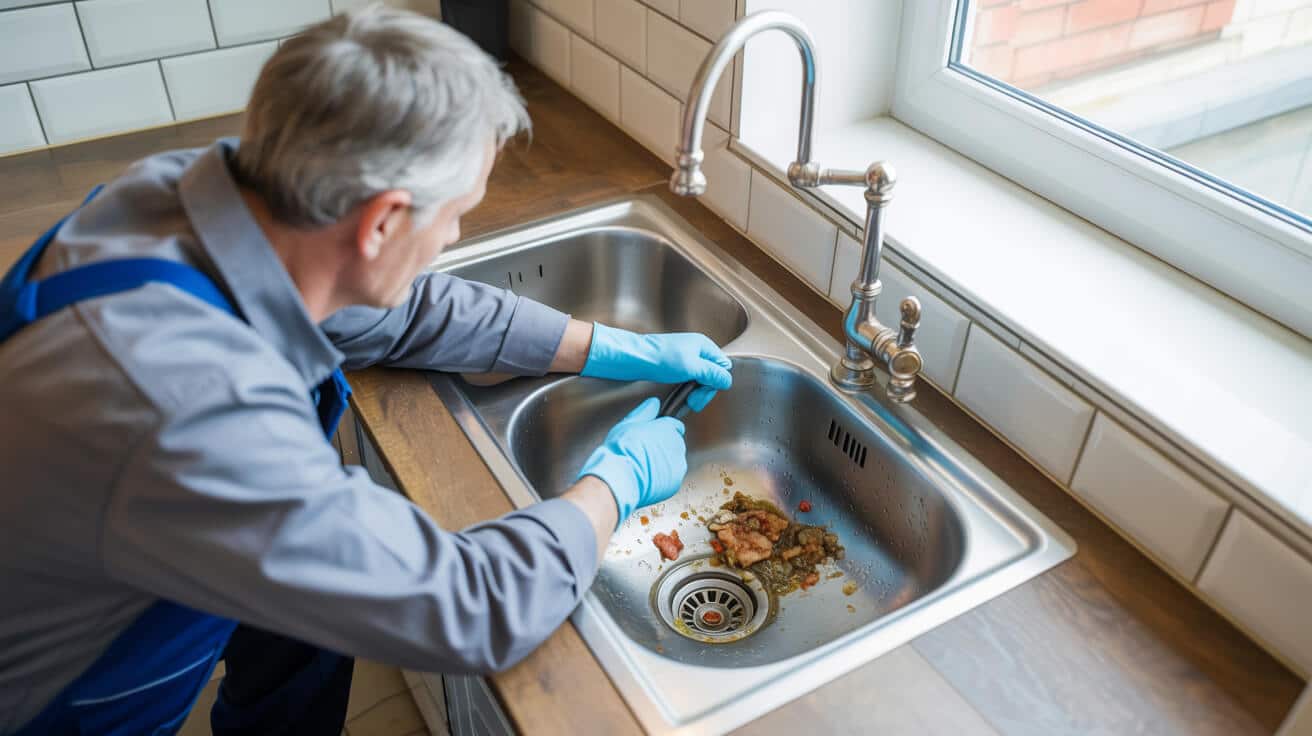
The overlooked attic, the cold utility room, the radiator nobody bothers bleeding—these hidden plumbing zones often trigger the quiet winter disasters that cost most. The myth is that “only external pipes freeze”; in reality, unlagged pipes against an external wall, air-locked radiators, or loft pipes running through the coldest spaces set the scene for catastrophe. For anyone managing properties, these are the complaints nobody wants to get at 2AM on a freezing January night.
Most catastrophic winter leaks start in places you didn’t think needed checking.
Engineer-Approved Autumn Defence for Indoor Systems
- Lag Before Stress: Any pipe in an unheated space (loft, boiler cupboard, uninsulated floor void) gets specific attention—wrap with WRAS-compliant insulation sleeves.
- Bleed Radiators Systematically: Work room to room. A cold spot at the top is air—bleed it out until heat’s even right across.
- Schedule Boiler Service: Book now, not “as winter comes.” This maintains your warranty and heads off holiday breakdowns. Remember, insurance claims for boiler failure may be denied if services are shown as “lapsed” ([British Gas](https://www.britishgas.co.uk/boilers-and-heating/boiler-servicing.html?utm_source=openai)).
- Document Everything: Secure all user guides, service logs, and engineer paperwork within easy reach—digital copies are easiest, and can save hours when claims or repairs loom.
Ticking these off your autumn list often means avoiding the highest stress and highest cost callouts of the entire year.
Proof-Backed Protection: What Your Next Winter Depends On
- Pipes in roof spaces or along unheated walls are burst risk #1—most January “emergency” repairs trace right back to these.
- Neglected radiators mean more repairs, higher bills, and escalation to tenant complaints or loss of EPC rating.
- No boiler service? It’s rarely “just a cost”: breakdowns are more expensive, appointments rarer, and loss of heating risks tenant compensation.
Those who go from “I meant to check” to “here’s our logbook and photos” see consistently lower costs and higher client or tenant satisfaction. It’s a system—documented diligence meets winter with calm, not chaos.
Can Quiet Leaks and Odd Stains Signal Looming Emergencies?
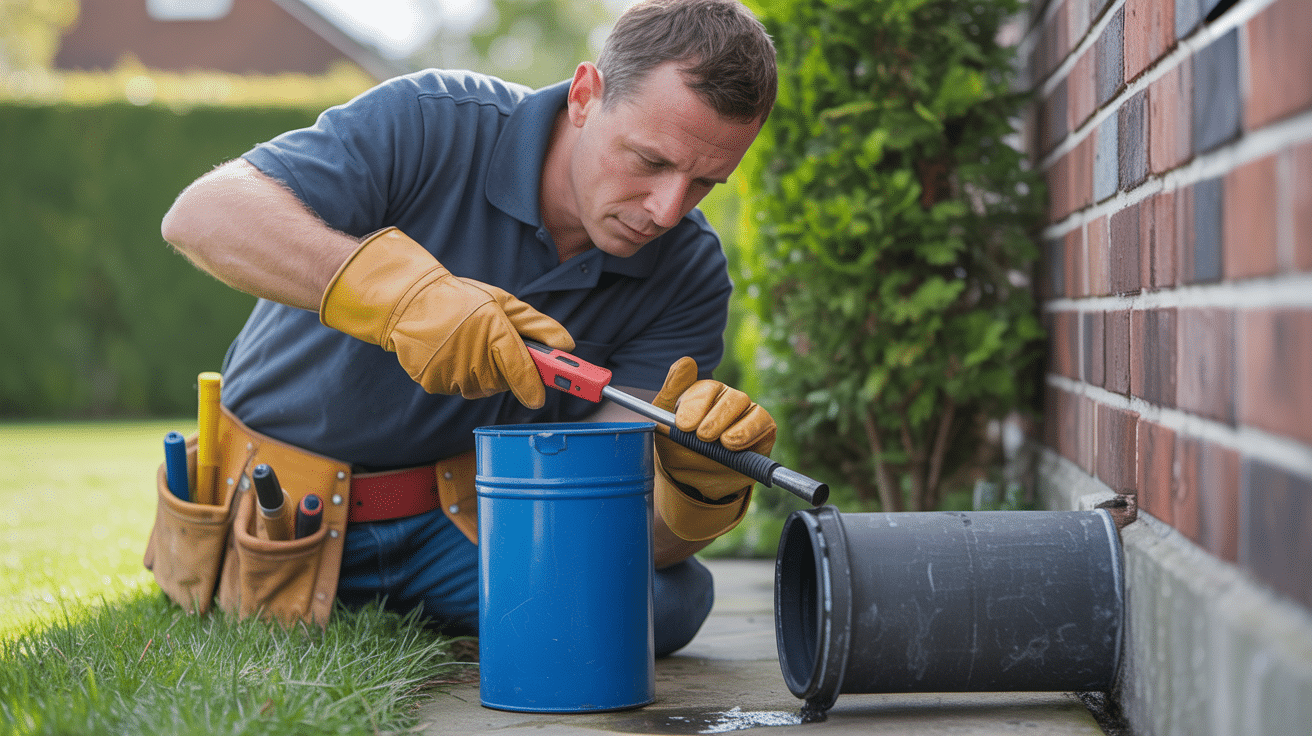
Not all leaks announce themselves with a drip in a bucket. Often, the first signal is subtle: a patch of bubbling paint, a musty odour, or a metre that ticks faster than it should. Owners who ignore these clues not only risk major repairs but also running afoul of insurers who now investigate ever more closely before paying out (Aviva 2024).
What you ignore as a minor stain today can end up denying you cover tomorrow.
Autumn Leak Intelligence: Catch It Before It Grows
- Post-Storm Walkaround: After big rain, check upstairs ceilings, downstairs corners, and appliance backs for soft or discoloured spots.
- Metre Magic: With all taps off, check your water metre. Any movement suggests a hidden leak—making this one of the fastest detection tools available.
- Leak Detectors Pay for Themselves: wireless sensors, especially behind washing machines or in boiler cupboards, can alert you long before a trickle becomes a flood.
- Photo and File: Log the date, action, repair, and photo evidence for every sign or fix. Modern claims handling expects this as baseline—not as “nice to have.”
Ignoring these signals moves you from “well managed” to “at risk” in your insurer’s eyes. And for landlords or block managers, a missed minor leak can quickly escalate into wall rot, tenant liability, or multi-flat complaints.
Early Action is Asset Insurance
- Musty odours or stained paint are not “character”—they are urgent messages from the building.
- Small surface bubbles often mean an ongoing internal leak—call for investigation, not cosmetic patching.
- Quick, well-documented escalation makes for fast, affordable fixes—quiet problems never get cheaper with time.
Every client, tenant, and auditor is reassured by clear records and clear action when minor leaks surface. This autumn, place as much priority on documentation as on detection.
What’s at Stake If You Skip Autumn’s Maintenance Routines?
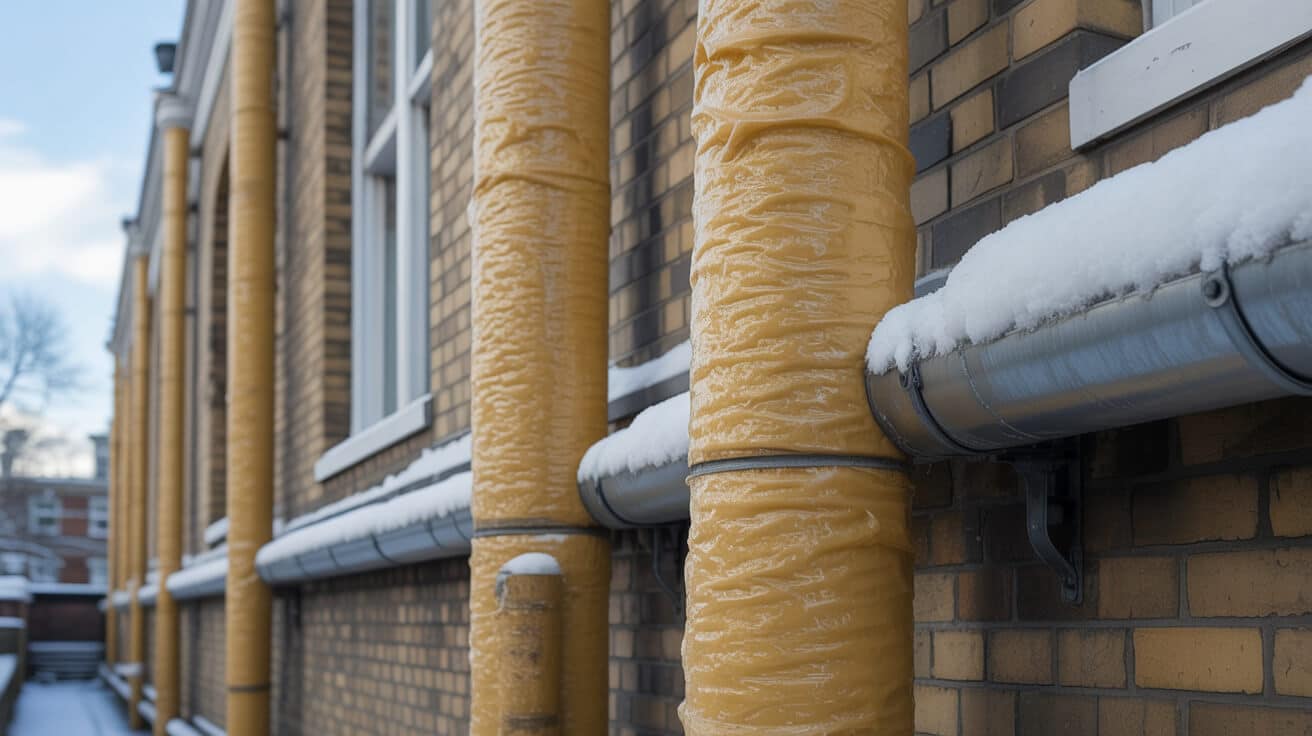
Most property careers are measured as much by “the disasters you avoided” as by repairs after the fact. Autumn is where that ledger is written: neglect costs so little in immediate effort, but so much in long-term pain. Letting agents, landlords, and property managers consistently report: the best winters come from an autumn logbook, not luck (ABI).
There is no routine plumbing job in autumn—only proactive or reactive costs.
Small Delays Lead to Big Bills—Quantified
- Gutter Neglect Multiplies Structural Risk: One missed autumn clear can mean water sitting at your footings all winter, bringing major expense when a “routine” crack appears ([North Bristol Window Cleaners](https://northbristolwindowcleaners.co.uk/2024/10/11/why-clean-gutters-are-essential-before-winter/?utm_source=openai)).
- Unprotected Taps Void Claims: Most freeze-damage payouts require proof—photos, invoices, and logs—that you insulated and isolated.
- Lapsed Documentation Breeds Complaint Issues: Tenant, block board, or audit queries are solved fast if you can share logs, quotes, and certifications on demand.
Show Your Work—Win Approval Every Time
- Keeping line-item logs and before/after records is standard for responsible property teams—protecting both assets and your reputation.
- Landlords embracing digital service tracking have reported quicker claim results and fewer winter emergencies.
- Every compliance certificate—WRAS, WaterSafe, G3, CP12, EPC—becomes evidence that you did more than minimum care.
Slipping on autumn routines doesn’t just cost money; it erodes trust with every stakeholder, client, or tenant. Autumn is the property world’s audit window—only those prepared reap the calm and credit that follow.
Why Trust Plumbers 4U as Your Autumn Plumbing Partner?
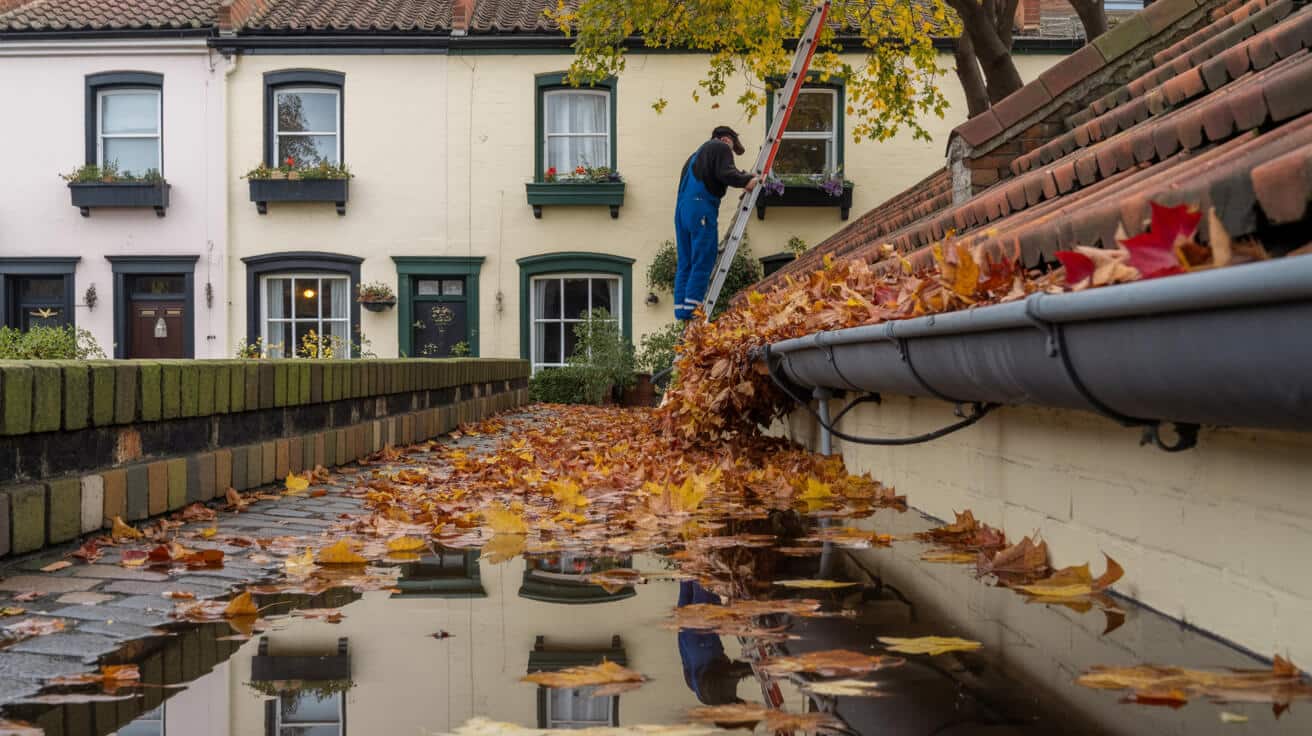
Winter is the test; autumn is the opportunity. Who you trust with autumn maintenance literally sets the “emergency versus peace” ratio for your entire year. Plumbers 4U brings the only standard acceptable to professionals: certified methods, documented care, and an ethic where every client leaves more capable and protected than before.
Genuine peace of mind comes from work that’s fully documented, standards-aligned, and left working as if it were our own home.
The Plumbers 4U Autumn Assurance
| What We Offer | How It Helps You | Evidence We Provide |
|---|---|---|
| Transparent Quotes | Know exact costs in advance | Line-by-line PDF or email |
| All Certifications | Meet legal and insurer demands | WRAS, WaterSafe, CP12, G3 |
| Documentation Flow | Speed claims and audits | Photos, engineer sign-off |
| Clean Handover | Easy, mistake-free operation | Demo, written instructions |
Our engineers see autumn through a practised lens: isolate, fix, double test, then explain with clarity. There’s no “upsell” script, no shortcuts—just compliance, evidence, and a commitment to treat your property with the care we’d want for our own. From homeowners to letting agents, landlords to boards, we follow an “audit-first” culture: every job gets documentation, every system cleanly explained, every area left ready for winter.
What Sets Our Work Apart
- Maintenance is judged not by what’s repaired, but by how much is avoided—our record is built on problem prevention, not reaction.
- Every checklist aligns with industry benchmarks, warranty rules, and insurance claims language—no one else gives you this level of audit readiness by default.
- Clients get training, not just fixes: you’ll know your system, your isolation valves, your documents—so emergencies become rare, not routine.
Join the hundreds who make winter boring by making autumn deliberate.
Book Plumbers 4U Today for a Stress-Free Autumn and Winter
You don’t want the learning to come when water’s coming through the ceiling at midnight, or the boiler’s silent mid-December—by then, “best practices” are just expensive advice. Comfort, safety, and financial calm all start with the actions you take before the cold sets in.
The comfort you guarantee today is the disaster you never have to face.
Own your autumn. Book your property’s plumbing check, outdoor pipe lag, compliance update, or urgent system repair with Plumbers 4U. Our WRAS-approved, code-aligned engineers bring the know-how, paperwork, and confidence you, your tenants, and your board expect. Your winter stays calm because the groundwork was laid when it mattered most. Every system lagged; every drain flowing; every handover clean and certified. Plumbers 4U is the partner your properties deserve.
Frequently Asked Questions
What overlooked autumn plumbing checks guarantee a winter without late-night emergencies?
Reliable winter plumbing doesn’t hinge on luck—it’s built on a clear set of autumn checks that most owners, landlords, and agents let slide. If you want zero unexpected callouts, start with the only tasks proven to block leaks, heating failure, or insurance wrangles as soon as temperatures drop. Focus on precise actions: fully draining and lagging external pipework, verifying every gutter run is debris-free, testing drain flow at ground level, bleeding radiators, and booking a benchmark-signing service visit for your boiler or cylinder. Each check seals a hidden weak spot that—ignored—becomes someone else’s 2am disaster.
It isn’t the freak cold snap that gets you—it’s the shortcut you took last October that you forgot in January.
Which checks hold the most weight?
- Gutters and downpipes: Clearing every joint and bracket stops water migration into insulation, loft spaces, and behind cladding—where claims and disputes multiply.
- Drains and gullies: Physically lifting grates and hosing each line marks the difference between minor puddles and soakaway failures once freezing starts.
- Pipe insulation and taps: Complete internal shut-off, opening (and draining) all exterior points, and fully lagging pipework with sealed, clipped insulation—no exposed elbows, no splits.
- Radiators and heating: Bleeding air, topping up pressure, and photo-logging a certified boiler check for both compliance and warranty support.
- Leak and damp checks: Look for surface swelling, staining, or blistering near skirtings and sills—often the earliest signal that autumn repairs are overdue.
- Timestamped documentation: Insurers, agents, and block managers routinely now demand visual proof of every action—failing to log steps leaves you unprotected.
What separates routine from reputation?
Landlords with a track-record for uneventful winters don’t rely on reminders—they systemise checks, capture photos, and get all paperwork in order. It’s a reputation currency that draws tenants and fast-tracks insurance calls months down the line.
Remove all doubt—schedule autumn tasks on your calendar, then let Plumbers 4U document the job. That silence in winter? It’s the sign you did autumn right.
How does skipping autumn gutter cleaning undermine both property structure and insurance claims?
One blocked gutter quickly snowballs into larger trouble—hidden wall leaks, mould outbreaks, and even arguments with insurers when winter’s water finds the gaps. In the UK, regular autumn gutter and downpipe clearing acts as the first firewall against everything from rot to subsidence, yet most insurance rejections for damp cite “lack of documented maintenance.” Water spilling down masonry, freezing at the footings, or tracking behind cavity insulation can quietly cost thousands. And let’s be clear: insurers’ evidence bar has risen—no dated log, no payout.
Clean gutters are insurance you’ll never see mentioned on the renewal letter—but you’ll wish you had if you skip them.
What evidence-backed risks lurk behind gutter neglect?
- Insidious leaks: Overflow leads to water tracking horizontally—roof to wall, wall to floor—creating persistent damp and timber decay.
- Mould proliferation: Damp from missed cleaning creates ideal breeding ground for black mould, risking health notices and tenancy disputes.
- Structural movement: Continuous wet base conditions between December and March can cause footings to slump or slabs to crack in older builds.
- Insurance refusal: Claims spike in winter storms, but adjusters routinely dismiss unscheduled damage if maintenance proof is lacking.
When and how to tackle gutters for best defence
- Optimal timing: Mid to late November, after most trees shed and before regular frost.
- Flush and flow-check: Pour water down each run—ensure nothing backs up, as blockage here risks collapse under snow.
- Inspect all fixings: Replace cracked, loosened, or wind-shifted supports to keep everything in place during gales.
- Photo-and-date logs: Especially for agents or landlords—demonstrate diligence for every key asset you manage.
Why a certified provider adds long-term value
Risk-rated blocks, portfolios, or multi-storey properties with awkward access demand pro hardware and proper safety guarantees. Plumbers 4U supplies documentation and evidence that satisfies both underwriters and letting agents—saving you hassle and paperwork if the worst happens.
Make one call before the cold sets in and watch the domino effect of damp, rot, and blame stay locked outside until spring.
What exact steps ensure drainage gullies won’t trigger floods, ice hazards, or property claims in winter?
Drainage gullies—those ground-level grates—quietly determine whether stormwater flows safely away or ruins basements, drives, or shops once winter tests your property. The difference isn’t luck or design; it’s methodical hands-on clearing at autumn’s end. Check and clear every gully, especially at rear lanes and corners, not just at main entrances. Physically scoop debris, brush silt and sand from covers, and flush with water to expose slow drains or bubbling—these always signal deeper trouble.
You rarely remember when you cleared the gully last—but you’ll remember the night it failed if you miss it.
Bulletproof autumn drainage routine:
- Debris removal by hand: Glove up and lift covers; bypassing even one can let a single storm overwhelm your system.
- Live flow testing: Pour a bucket or hose into each gully—any delay or upward bubbles means partial block or collapsed line.
- Grid refit and anchoring: Secure covers firmly, replacing any loosened or missing clips; prevents accidents, pest ingress, and liability.
- Outcome logging: In managed or rented settings, each action and finding should be logged with time, date, and photo to satisfy audit or insurance checks.
Why is this so often overlooked—and what does it cost?
Many owners skip ground-level checks, wrongly thinking upper drainage carries all the risk. Yet, nearly all winter “flood” incidents in managed properties begin with a blocked side gully or neglected channel behind outbuildings.
For high-traffic commercial, multi-unit residential, or listed buildings, a professional CCTV survey ahead of winter uncovers historic risks—allowing fast, preemptive correction.
Protect the walkways, walls, and insurance standing that separate a well-run site from a “flooded again” address. Plumbers 4U will clear, log, and risk-score every gully you can (and can’t) see.
Why is lagging and draining external taps and pipes the first line of defence against winter burst disasters?
Frozen outdoor fittings cause nearly half of all plumbing emergencies post-Christmas in UK homes and commercial sites. Once frozen, even small pipework behind cladding or underground cracks on thaw, letting water pour out unseen for days. Effective defence doesn’t take luck—just accurate shutoff, full drainage, and insulation on every exposed run before the first real frost.
Pipes don’t burst when it’s cold—they burst because you left water in them weeks earlier.
Lockdown for pipes and taps:
- Find every internal shut-off: Usually below kitchen sinks or utility cupboards; turn fully off.
- Fully drain each external line: Open the outside tap and leave it open—trapped water is what freezes and splits pipes.
- Instal and check lagging: Cut foam insulation to cover pipes (and elbows); check for gaps or loose sections.
- Insulate exposed tap heads: Use tap “jackets” fitted securely, especially for wind-exposed corners, car parks, or retail frontages.
- Reference and teach: Mark isolation valves on building diagrams to aid future urgent access, especially in HMO, rental, or managed environments.
The audit-proof advantage
A dated photo of both the shutoff and drained (open) tap can make or break your insurance claim. Increasingly, property managers ask for this for every unit.
Professional teams like Plumbers 4U bring all the WRAS and WaterSafe materials—so not only is protection robust, but all proof is ready if you (or your client) ever need it.
With autumn’s right prep, you never have to worry whether your external lines are the weak spot that makes it everyone’s problem in January.
How do seemingly minor skipped autumn plumbing steps spiral into the winter nightmares everyone dreads?
Winter emergencies nearly always have their roots in shortcuts owners take in the autumn. Every missed task—an unchecked gully, unlagged outdoor pipe, unscheduled boiler service—sets up a chain reaction that unravels property value, reduces comfort, and pulls you into legal or insurance wrangles. Modern insurers and block managers know the playbook: if you don’t have hard proof a risk was checked, the claim is kicked back or delayed for weeks.
When the disaster comes in winter, it started with an unchecked box in autumn—and ends in lost time, money, and sleep.
Breakdown: consequence chains for missed tasks
- Damp and structure damage: Skipped gutter or drain cleaning causes insidious wall leaks, leading to spreads of black mould, rotten joists, and even re-homing tenants in managed lets.
- Expensive burst events: One unlagged tap or pipe takes out electricals, damages décor, and puts vital amenities out of commission, often for days.
- Heating loss in the worst week: Failing to bleed radiators or check boiler pressure makes December heating loss all but guaranteed—with urgent service fees multiplying.
- Documentation gaps: The insurance and letting world is now “proof-driven”—a missing logbook means lost time, not just lost money.
Cost domino by SKU
| Overlooked Action | Emergency Failure | Repair Bill | Downtime | Reputation Risk |
|---|---|---|---|---|
| Gutter/drain skip | Internal damp | £1,000–£8,000+ | 2 days—4 weeks | Tenant complaints |
| No lagging/shut-off | Burst/freeze leak | £450–£2,500+ | 1–3 days | Deposit disputes |
| Missing heating check | No heat/hot water | £200–£1,800+ | 1–2 days | Reviews, rent loss |
Professional managers and switched-on landlords handle these risks with scheduled checks, documented proof, and proactive repair budgets—managing winter like a non-event, even as others scramble.
Don’t let a last-minute callout define your year. A single service call and smart autumn checklist with Plumbers 4U can keep you, your property, and your reputation outside the emergency loop for good.
What return on investment do certified autumn plumbing services like Plumbers 4U actually deliver?
DIY efforts are worthwhile, but for property managers, landlords, and organisations needing audit certainty, certified autumn maintenance delivers both tangible value and risk elimination. Plumbers 4U’s WRAS, WaterSafe, and G3 certifications give your records instant credibility for insurers, letting agents, and local authorities. Every check includes digital logs and issue tracking, creating an audit trail that accelerates claims and protects against shifting regulations. Plus, you’ll receive advice on EPC-boosting upgrades, eligible grant schemes, and risk-tailored recommendations for your portfolio—not just box-ticking.
A documented compliance record isn’t just paperwork—it’s a buffer between you and lost rent, fines, or penalties across your entire portfolio.
Key gains from certified autumn support
- Insurer-ready evidence: Digital and photo logs mapped to specific UK compliance, from WRAS and G3 to LABC and Gas Safe—protects every unit.
- Fixed and transparent pricing: No surprises, line-by-line quotes, and clear separation of “findings” versus “repairs.”
- Guidance for upgrades and grants: Pro advice on insulation, smart controls, or renewables positions your properties for lower bills and new regulatory standards.
- End-user demos and documentation: All staff, tenants, or facilities teams get simple, actionable guides—so future service calls are faster and less stressful.
Who wins most, and why?
Landlords wanting hands-off winter, block and estate managers with multi-unit exposures, and progressive owners looking to enhance asset value and compliance transparency.
Secure your autumn slot with Plumbers 4U now and you’ll have a season’s worth of readiness, compliance, and evidence—before other landlords even start thinking about the first frost.

